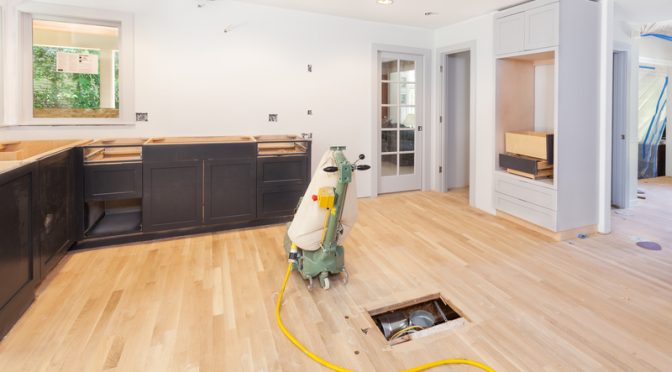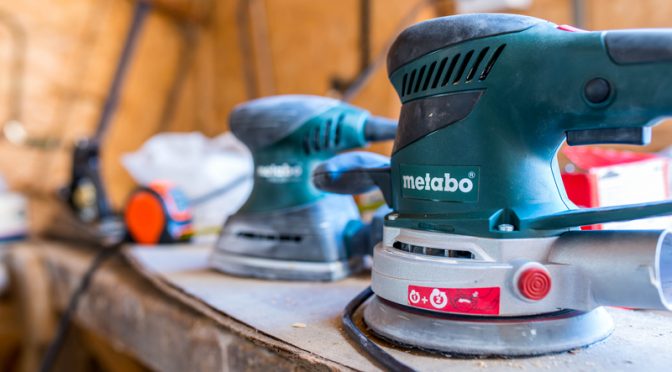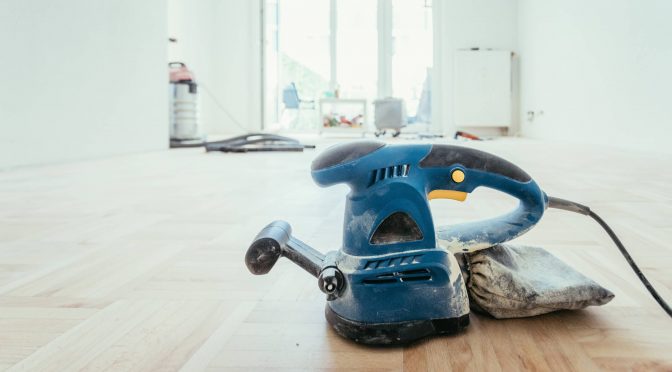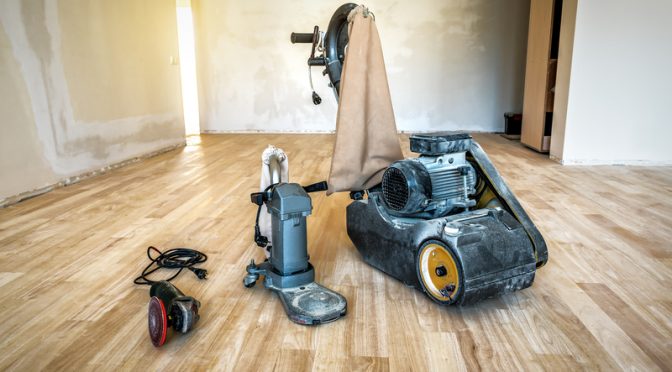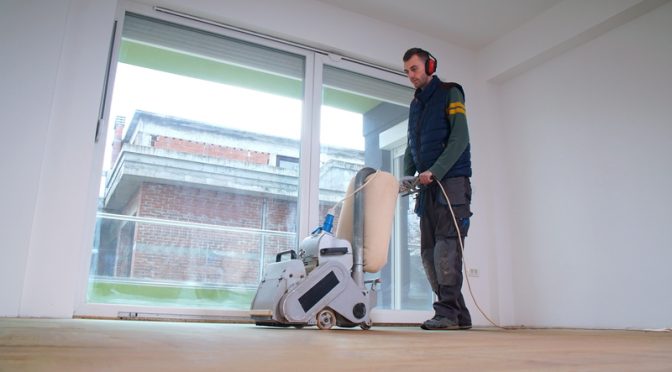Renovating your home is a fantastic way to breathe new life into your living space. Whether you’re updating a single room or giving your entire house a makeover, the right tools can make all the difference in achieving that polished, professional finish. Among the many tools you might consider for your renovation project, a floor sander stands out as an invaluable asset when it comes to transforming tired wooden floors.
But is a floor sander the right tool for your home renovation project? Let’s explore what floor sanders do when to use them, and how they can elevate your renovation results.
What is a Floor Sander and What Does it Do?
A floor sander is a specialised power tool designed to smooth and rejuvenate wooden floors. Over time, wooden floors can accumulate scratches, stains, and wear, making them look dull and lifeless. A floor sander removes the top layer of wood, erasing imperfections and preparing the surface for a fresh finish.
Types of Floor Sanders
There are several types of floor sanders to suit different needs:
- Drum Sanders: These drum sanders are heavy-duty machines that are ideal for tackling large areas and removing deep imperfections.
- Orbital Sanders: Orbital sanders are great for lighter refinishing tasks and achieving a fine, smooth finish.
- Edge Sanders: Perfect for reaching corners and edges where larger machines can’t go.
When Should You Consider Using a Floor Sander?
Not every project requires a floor sander, but there are specific scenarios where it’s the ideal choice:
- Refinishing Worn-Out Wooden Floors: If your floors have seen better days, a floor sander can restore them to their former glory.
- Changing the Colour or Finish of Your Floor: Whether you want a lighter natural look or a darker, richer tone, sanding provides a clean slate for staining or varnishing.
- Preparing Floors for Sealing or Varnishing: For a professional-quality finish, a properly sanded floor is essential.
What Types of Floors Are Suitable for Sanding?
Floor sanders work best on solid hardwood, parquet, and engineered wood (as long as the top layer is thick enough to withstand sanding). If your floors are laminate or heavily damaged, sanding may not be suitable, so always assess your floor’s condition beforehand.
Advantages of Using a Floor Sander in Your Renovation
If you’re still on the fence about whether to hire a floor sander, here are some compelling reasons to give it a go:
- Cost-Effectiveness:
Hiring a professional to refinish your floors can be expensive. Renting a floor sander and doing the work yourself is a budget-friendly alternative that doesn’t compromise on quality. - Customisable Results:
Taking on the sanding yourself allows you to experiment with different finishes, from natural wood tones to bold stains that complement your interior design. - Enhanced Aesthetics:
A beautifully refinished wooden floor can dramatically elevate the look of your space, giving it a clean and timeless feel. - Increased Property Value:
Well-maintained wooden floors are a sought-after feature in homes and can add to your property’s resale value.
Challenges and Considerations When Using a Floor Sander
Using a floor sander can be a game-changer for your home renovation project, but it’s not without its challenges. Before diving in, it’s crucial to understand the potential obstacles and how to overcome them to ensure a successful outcome.
Skills and Experience Required
Operating a floor sander effectively takes some practice. While the tool itself is straightforward, achieving a smooth, even finish requires attention to detail and a steady hand. If you’re new to sanding, consider practising on a less visible area before tackling the entire floor.
Potential Risks
- Uneven Sanding: If you linger too long in one spot, you could create dips or grooves in the wood. Moving the sander steadily and consistently is key.
- Floor Damage: Inexperienced users may accidentally sand too deeply, compromising the wood’s structural integrity. This is especially critical for thinner floors like engineered wood.
- Dust Hazards: Sanding generates a significant amount of fine dust, which can be harmful to both you and your surroundings. Proper dust extraction systems and masks are essential to minimise this risk.
Dust Management and Safety Equipment
Dust can quickly become a nuisance if not managed correctly. Many modern sanders come with built-in dust collection systems, but it’s wise to supplement this with:
- A high-quality dust mask or respirator to protect your lungs.
- Safety goggles to shield your eyes.
- Plastic sheeting to seal off other areas of your home and prevent the spread of dust.
Alternatives to Using a Floor Sander
If using a floor sander feels overwhelming or unsuitable for your project, there are alternative options to explore.
Professional Floor Refinishing Services
For a hassle-free experience, hiring a professional service is a great option. Professionals have the expertise and tools to deliver flawless results without the risks associated with DIY sanding. While this option may be costlier, it saves time and ensures a polished finish.
DIY Kits for Small Touch-Ups
If your floors only need minor repairs, consider DIY touch-up kits. These kits typically include everything needed to fill scratches, remove stains, and restore shine without requiring a full sanding job.
Alternatives for Unsuitable Floors
Not all floors can be sanded. For example:
- Laminate Floors: These are not made of real wood and cannot be sanded. Instead, consider replacing damaged boards or adding a new layer of finish.
- Heavily Damaged Wood: Floors with extensive water damage, warping, or deep gouges may be beyond repair. In these cases, replacing the flooring might be the best solution.
How to Determine If a Floor Sander is Right for Your Project
Choosing whether to use a floor sander depends on several factors. Here’s how to make the best decision for your renovation.
Assess the Condition of Your Floors
Inspect your floors carefully. If they’re structurally sound and free from severe damage, sanding could be an excellent option to breathe new life into them. However, floors with significant damage or laminate materials may require alternative solutions.
Evaluate Your DIY Skills
Ask yourself:
- Are you comfortable operating machinery?
- Do you have the patience and attention to detail required for sanding?
If you’re a confident DIYer with some experience, renting a floor sander could save money and give you a sense of accomplishment.
Consider Your Budget and Time Constraints
DIY sanding can be cost-effective, but it does require an investment of time and effort. If you’re on a tight schedule or prefer a stress-free process, professional refinishing services might be worth the extra expense.
Review Your Renovation Needs
Think about the final result you want to achieve. If your goal is to completely transform your floors, a floor sander might be the perfect tool. For smaller touch-ups or cosmetic fixes, simpler alternatives could suffice.
What We Think?
A floor sander can be a game-changing tool in your home renovation journey, offering a professional finish and renewed life to your wooden floors. However, it’s essential to weigh the benefits against the challenges, such as the skills required and the time investment.
By preparing properly, following safety guidelines, and choosing the right type of sander, you can achieve impressive results that elevate your home’s aesthetic and value. Don’t forget to consider the importance of sealing your floor after sanding to preserve its beauty and durability.
Make Your Renovation Easier with Floor Sanders London
Ready to tackle your renovation project? At Floor Sanders London, we’re here to make your flooring transformation as smooth as possible. We offer a wide range of top-quality floor sander rentals, perfect for everything from restoring tired hardwood floors to preparing surfaces for a fresh finish.
With our selection of professional-grade sanders, essential tools like belt and drum sanders, and dust management systems, you’ll have everything you need to achieve flawless results. Plus, our affordable rental packages are tailored for both DIY enthusiasts and professionals, making it easier than ever to bring your vision to life. Let us help you get started on creating the floors you’ve always dreamed of!
Explore our complete sander packages to ensure you have everything required for a seamless project. If you’re unsure which sander is right for you, our friendly team is here to help. Call us today at 0208 427 6604 or contact us online with any questions or queries about floor sander rental. Let’s bring your home renovation vision to life!

